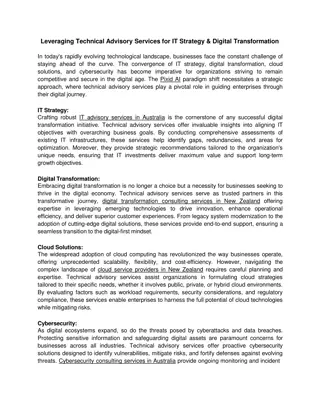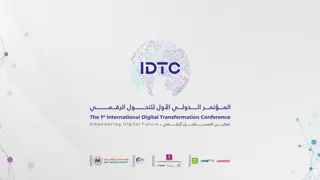Objectives of digital transformation in the field of Justice
Digital transformation in the field of justice aims to ensure access and effectiveness, avoiding exclusion of vulnerable groups. National and cross-border judicial cooperation are key. Identified issues in mapping show varied progress among Member States, highlighting the need for financial support, legislative initiatives, and IT tools. Tools like the toolbox and financial assistance to Member States play a role in promoting people-centered digitalization.
Download Presentation

Please find below an Image/Link to download the presentation.
The content on the website is provided AS IS for your information and personal use only. It may not be sold, licensed, or shared on other websites without obtaining consent from the author.If you encounter any issues during the download, it is possible that the publisher has removed the file from their server.
You are allowed to download the files provided on this website for personal or commercial use, subject to the condition that they are used lawfully. All files are the property of their respective owners.
The content on the website is provided AS IS for your information and personal use only. It may not be sold, licensed, or shared on other websites without obtaining consent from the author.
E N D
Presentation Transcript
Objectives of digital transformation in the field of Justice IMOLA II Training Seminar 27 September 2021 G sta Petri Deputy Head of Unit e-Justice, IT and Document Management DG Justice and Consumers, Unit B3 Gosta.petri@ec.europa.eu 27 September 2021
The objectives Digitalisation not a end in itself: twin objectives of ensuring access to justice and effective justice systems The impact of Covid-19: need to accelerate digital transformation Commission Communication of December 2020 Addresses both national justice systems and cross-border judicial cooperation
Inclusive digitalisation Need to ensure that digitalisation does not reduce vulnerable groups access to justice No one should be left behind Digitalisation needs to be people-centred Efficiency gains due to digitalisation should not be an excuse for reducing the resources of the judiciary and other justice services.
Problems identified the mapping The mapping reveals a different level of progress amongst the Member States: individuals can access an electronic file of their ongoing cases in 10 Member States in all types of civil law procedure; in the context of criminal law, victims can access an electronic file in seven Member States and defendants in nine; evidence can be submitted to a court exclusively in digital format in the context of alltypes of criminal proceedings in 13 Member States; in civil and commercial law, digital evidence is admissible in all types of proceedingsin 10 Member States.
The toolbox Financial support to MS Legislative initiatives IT tools Promotion of national coordination and moni- toring instruments
Financial support to Member States National level: Recovery and Resilience Facility 2021-2027 cohesion policy proposals Technical Support Instrument EU level: Justice Programme Digital Europe Programme
Cross-border judicial cooperation Possible legislation to make the digital channel mandatory Electronic document must not be denied legal effect and admissibility as evidence in legal proceedings Electronic identification and signatures/ seals Basis for the processing of personal data Architecture of the underlying IT system
Artificial intelligence While the advantages of introducing AI- based applications in the justice system are clear, there are also considerable risks associated with their use Proposed actions: Exchange best practices (Member States and the EU institutions, JHA agencies and bodies, and legal professional organisations) - Webinars Explore ways to increase the availability of relevant machine-readable data produced by the judiciary
Interconnection of registers Interconnections achieved: BRIS, ECRIS, IRI Land Registers Interconnection system (LRI) should be extended to cover all EU by 2024 MS to further develop videoconferencing
IT tools for cross-border exchange e-CODEX the gold standard e-Evidence Digital Exchange System (eEDES) Reusable tools for the digitalisation of EU cross- border civil, commercial and criminal legal acts
Digital criminal justice JHA agencies and bodies such as the EPPO, Eurojust and Europol need to be suitably equipped to fulfil their mission, cooperate Modernise Eurojust s case management system (CMS) hit/no-hit connections between Eurojust s, Europol s and the EPPO s CMSs Legislative proposal on exchanges on digital cross- border terrorism cases Legislative proposal for a Regulation on a JIT collaboration platform
My e-Justice space Existing access to various services offered by the judiciary and public administrations, e.g. provision of certified copies of criminal records, birth certificates, wills A My e-Justice space should be established as an entry point with links to available national services On the e-Justice Portal later possibility to make requests for documents directly from the Portal Access point to files small claims and requests for European Payment Orders on the Portal
Cooperation, coordination and monitoring tools Enhance the monitoring of progress on digitalisation at national level through the EU justice scoreboard Collect information on the e-Justice portal on national initiatives on the digitalisation of justice Digital Justice Ministerial Forum / regular stock- taking Research and foresight activities
In conclusion Imperative to harness the opportunities for digitalisation triggered by the Covid-19 crisis Need to keep up the momentum Bearing in mind that digitalisation is merely a means to end: more effective and efficient justice system, fully accessible to citizens and businesses























